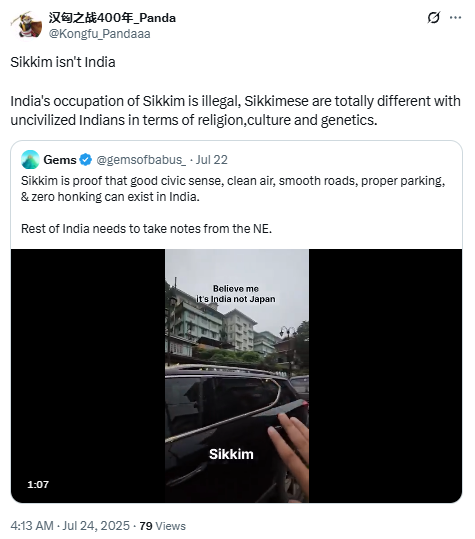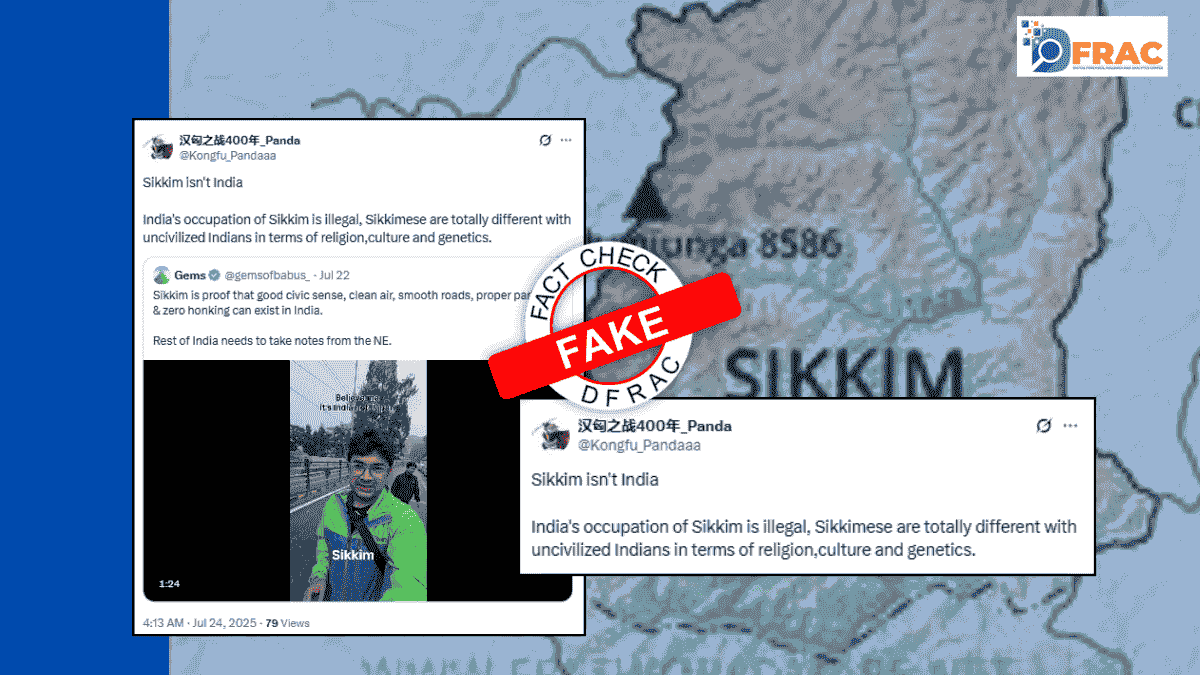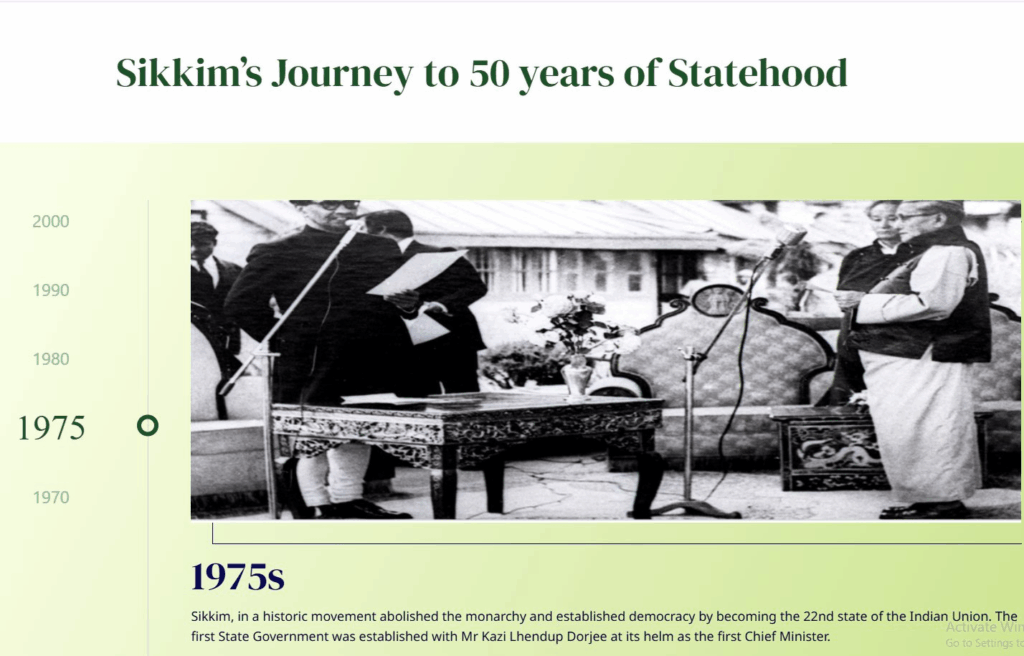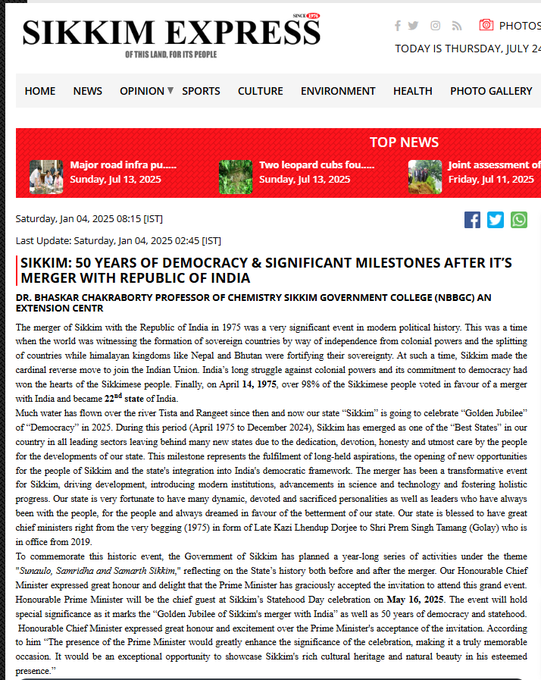A claim has been shared stating, “ Sikkim isn’t India, India’s occupation of Sikkim is illegal, Sikkimese are totally different from uncivilized Indians in terms of religion, culture, and genetics.”

Fact Check
Upon investigation, we found the claim to be Fake and factually incorrect.
The Indo–Sikkim Treaty (1950) made Sikkim an Indian protectorate (India managed defense, communications, and foreign affairs) while Sikkim retained internal autonomy. The 35th Amendment (1974) granted associate state status; the 36th Amendment (1975) made Sikkim a full-fledged Indian state and introduced Article 371F, protecting local laws, land rights, and political representation for Sikkimese.
Political unrest in 1973 had weakened the Sikkimese monarchy, leading to increasing demands for democratic reforms. In 1975, the Sikkimese parliament voted to abolish the monarchy and pursue a merger with India.
A referendum was subsequently held, in which over 97% of voters supported joining India. Following the referendum, the Indian Parliament passed the 36th Amendment to the Constitution, formally admitting Sikkim as the 22nd state of India. This process has been widely recognized internationally, with the United Nations and the vast majority of countries acknowledging Sikkim as an integral part of India.
Furthermore, Sikkim is ethnically diverse, comprising mainly the Lepcha, Bhutia, and Nepali-origin (Gorkha) communities, with at least 13 languages and 21+ ethnic groups. Cultural, religious, and genetic diversity within Sikkim reflects India’s broader multicultural fabric; it does not negate Sikkimese citizenship or India’s sovereignty over the state.
Conclusion
Thus, from the above facts, it is evident that the viral claim is factually incorrect. Sikkim is legally and constitutionally part of India.







